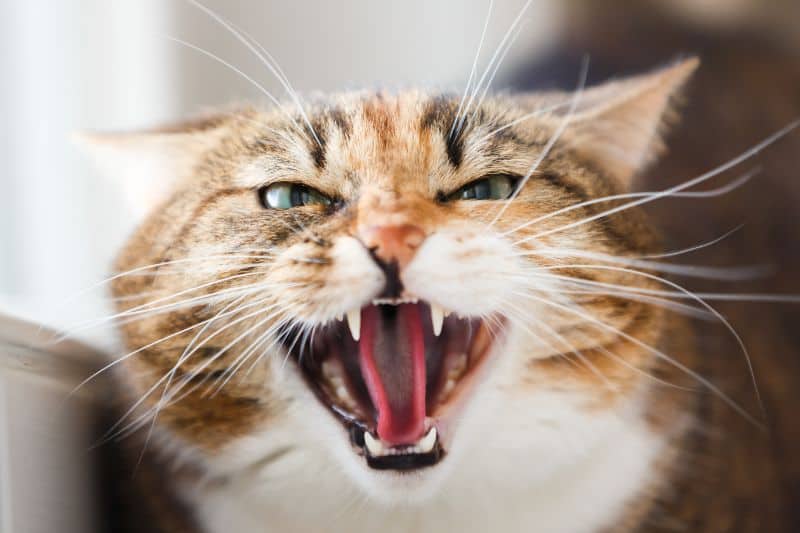How to Keep Your Cat Safe From Snakes

Whether they’re strictly indoor-only cats or allowed to roam, felines are stellar hunters. Equipped with primal instincts, even spoiled, domesticated felines can hunt like their big cat cousins. Rodents, birds, and various insects are no match for your cat’s predatory skills, but what about snakes?
Just because they can hunt snakes, it doesn’t mean that cats should. Obviously, venomous snakes have no place in your home but what is it going to take to keep your cat safe from snakes in the yard?
The Relatively High Risk of Snakes to Your Cat
Snake bites are more common between March and October, but snakes are around all year. Rattlesnakes are probably the biggest threat, but they are usually only aggressive when trying to defend themselves. Gopher snakes and king snakes are just as common. Despite having no venom, these snakes can still bite predators. Also, venomous snakes, like copperheads, dry bite perceived threats.
As a result, precautions are necessary to prevent negative snake encounters.
The Physical Matters
Venomous snake bites should be avoided at all costs, but how can an owner keep their cat safe from snakes if they wander beyond visibility?
If possible, clicker train your cat to avoid certain areas. Snakes like rocks, wood piles, and fallen logs. Removing these items from your property can help limit snake habitats. Always pick up birdseed and garbage to reduce rodents.
If your cat sees a dead snake, prohibit them from investigating as snakes can still bite after death. Also, because snakes can strike across a distance that’s about half their body length, your cat shouldn’t get remotely close to them.
Sad and Bored
Sure, snakes can get into your house by way of the crawl space, or open ground floor windows or doors. But the most effective way to keep your cat safe from snakes is to minimize their exposure.
An indoor-only cat doesn’t have to be lonely, bored, or sad. You can provide ways for them to explore vertical space, use their predatory skills, and exercise. A catio (fully enclosed feline enclosure) offers the best of both worlds.
What to Do
All snake bites are painful. Typically occurring on a cat’s muzzle or leg, you should be able to see two distinct fang marks. Redness, bleeding and swelling at the bite site can precede vomiting, weakness or lethargy. Rapid pulse, low blood pressure, shortness of breath, and intense pain typically accompany snake bites.
If you can keep the bite site below the heart, this can reduce how much venom enters the bloodstream. Stay calm and seek immediate veterinary help.
A venomous snake bite requires antivenom, but generally all snake bites benefit from examination, possible IV fluids, antibiotics, and pain medication. If the bite is severe, observation may be necessary, but otherwise your cat should be able to recover at home.
Is My Cat Safe From Snakes?
If you have additional questions about your cat’s behavior or their surrounding environment, our veterinarians are always here for you at Rocklin Ranch Veterinary Hospital.

